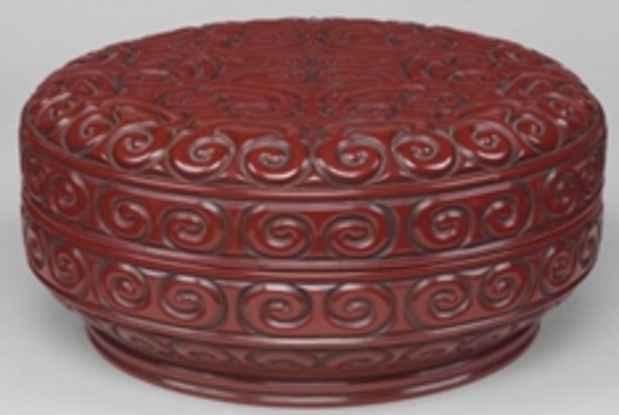"Red and Black Chinese Lacquer, 13th–16th Century" Exhibition
The Metropolitan Museum of Art

This event has ended.
Lacquer, made from the resin of a family of trees (Rhus verniciflua) native to East Asia, is an amazing material. When tapped from the tree, it is white or light gray and has a consistency similar to that of molasses. When exposed to oxygen and humidity, lacquer polymerizes, or hardens, into a natural plastic that is resistant to water, certain acids, and heat, rendering it an ideal protective covering for objects made of wood and, occasionally, metal.
Produced largely in the south, lacquer has been used in China since at least the sixth century B.C. on serving vessels, boxes, and other containers. When mixed with pigments, particularly red (cinnabar) and black (carbon), lacquer is also used for painting. Historical records indicate that Chinese lacquer was imported into the area near present-day Samarkand as early as the twelfth century, and it is documented in Japanese collections as early as the fourteenth. Lacquers served as diplomatic gifts and luxurious trade goods, and they have been an integral part of the Japanese tea ceremony for centuries.
Organized in celebration of three spectacular gifts to the Museum, this small exhibition explores techniques and themes in Chinese lacquer from the thirteenth to the sixteenth century, a high point in the development of this uniquely Asian artistic tradition. Some works illustrate the carved-lacquer technique, in which multiple layers of lacquer—as many as two hundred—are incised deeply with lush geometric or figural patterns, or scenes of figures in landscapes. Other objects demonstrate related techniques whereby shallower incisions are inlaid with gold, pigment, or minute pieces of mother-of-pearl to create equally ornate surface decoration.
Lacquerware shares the rich visual language found in ceramics, textiles, and paintings, including figural scenes based on Chinese literature and history; mythical creatures such as dragons and phoenixes; birds and other animals; and flowers and plants. Most of these motifs are imbued with meanings, usually auspicious, derived from longstanding cultural traditions. For example, the peony alludes to spring and denotes wealth, while the chrysanthemum symbolizes autumn and longevity. Both flowers frequently are grouped with others, generally lotus and plum, to define the four seasons. Other motifs, such as the Asian flycatcher (shoudainiao), a bird seen often in early carved lacquers, can serve as rebuses emblematic of good wishes. In this instance, shoudainiao can be a proxy for the notion of enduring generations, for the first character of its name, shou, is a homonym for longevity; the second, dai, for generations.
Media
Schedule
from September 07, 2011 to April 15, 2012